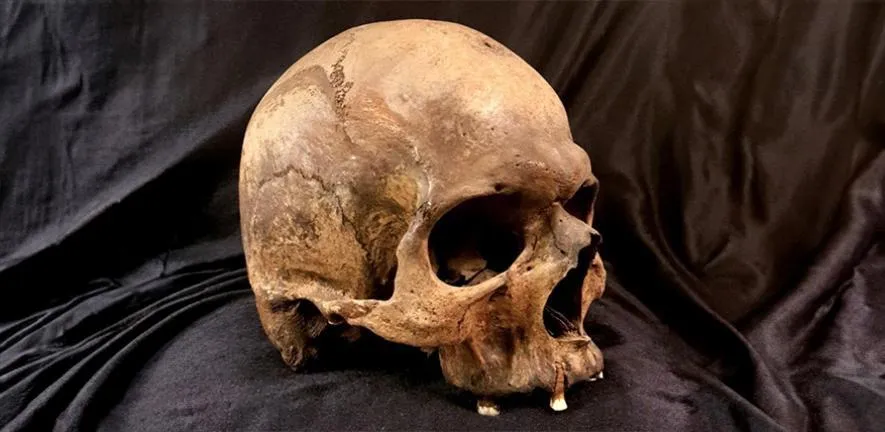With Ancient DNA, Scientists Have Mapped 37,000 Years of Disease Across Europe and Asia
Zoonoses—diseases that spread from animals to humans—began to gain prevalence some 6,500 years ago with the rise of animal husbandry, a new study suggests

From avian influenza to Zika virus, more than 200 modern diseases are classified as zoonoses—those that can spread to humans via other animals.
Rampant and widespread—look no further than Covid-19, malaria or Lyme disease—zoonoses are often at the center of contemporary outbreaks, epidemics and research. Six out of every ten known infectious diseases are zoonotic, and three of every four new or emerging diseases affecting humans come from animals.
Need to know: Some pathogens spread from animals to humans
Certain animal species can be reservoir hosts for a disease—organisms where a pathogen can survive and reproduce, often without causing illness. But these pathogens can jump to infect a new species, such as humans, in an event known as spillover.
Scientists have long speculated that these diseases began afflicting societies in earnest around the time animals were domesticated, though they’ve never quite had the genetic evidence or pinned down a specific timeline—until now.
In a new study published earlier this month in the journal Nature, a team of scientists traced the genetic history of 214 diseases across Europe and Asia over the last 37,000 years. Their findings add strong evidence that the rise of animal husbandry forever shaped humanity’s relationship with disease, though the timing defied their expectations.
The researchers found that zoonotic pathogens emerged roughly 6,500 years ago and spiked 5,000 years ago. That surprised them, reports the New York Times’ Carl Zimmer, because it was several thousand years after humans in Mesopotamia and Southeast Asia began domesticating animals. But the genetic evidence points to zoonoses initially becoming prevalent in Asia and Russia as communities transitioned from hunter-gatherer lifestyles to nomadic livestock herding or farming.
Having already tamed horses, pastoralist communities began to travel in wagons pulled by oxen, allowing them to voyage farther and exchange goods, ideas and diseases with other nomadic communities. Though some pathogens likely spilled over from animals to humans even earlier, these changes made the spread more prevalent, the research suggests.
“The scale of the work is really pretty breathtaking,” Edward Holmes, a virologist at the University of Sydney who wasn’t involved in the study, tells Nature’s Smriti Mallapaty. “It’s a technical tour de force.”
A vast analysis of DNA from ancient human remains made this chronicle possible. The researchers extracted the remnants of microbial genetic material from the teeth and bones of 1,313 human skeletons and identified 5,486 DNA sequences from bacteria, parasites and viruses. Many of these remains were found in the same graves, indicating that a single contagion event killed multiple people.
/https://tf-cmsv2-smithsonianmag-media.s3.amazonaws.com/filer_public/89/2c/892c93cd-49c3-45e8-a9a5-d7afa64e9c58/41586_2025_9192_fig1_html.webp)
The team isn’t exactly sure why zoonotic diseases emerged when they did. But the study builds on existing evidence that over time, mutations in these pathogens helped strengthen the immune systems of the nomads that were among the first to get sick, while more stagnant farmers and hunter-gatherers succumbed to the new diseases. On the flip side, as a study last year suggested, these nomads’ evolving immune systems might have also made them susceptible to chronic illnesses including multiple sclerosis.
Understanding the ways that pathogens affected humans long ago could help with improving modern treatments and methods for prevention of disease.
“Mutations that were successful in the past are likely to reappear,” Eske Willerslev, an evolutionary geneticist at the University of Copenhagen and senior author of both the new study and last year’s paper, says in a statement. “This knowledge is important for future vaccines, as it allows us to test whether current vaccines provide sufficient coverage or whether new ones need to be developed due to mutations.”
One sample the scientists analyzed, dating to some 5,500 years ago, contained the world’s oldest known genetic trace of Yersinia pestis, the bacteria that caused the plague that killed between 30 and 50 percent of Europe’s population during the Middle Ages. The pathogen spreads from fleas to rodents to humans—even today—and it’s just one example of how zoonoses have had a massive influence on human history and culture.
“These infections didn’t just cause illness—they may have contributed to population collapse, migration and genetic adaptation,” Willerslev adds in the statement.
Traces of other diseases identified in the human bones and teeth include malaria (4,200 years old), leprosy (1,400 years old), Hepatitis B (9,800 years old) and diphtheria (11,100 years old).
The work, though expansive, has a few limitations, the scientists note. The genes of many viruses are encoded in RNA, which was not studied during this project. And the research might have missed some pathogens that were present at only low levels in the samples. Additionally, the histories revealed are limited to the Eurasian sites in which the skeleton samples were found. Ancient DNA samples from Africa, for instance, were not widely accessible for this study, says lead author Martin Sikora, a geneticist at the University of Copenhagen, to the New York Times.
“If we understand what happened in the past, it can help us prepare for the future,” Sikora adds in the statement. “Many of the newly emerging infectious diseases are predicted to originate from animals.”



